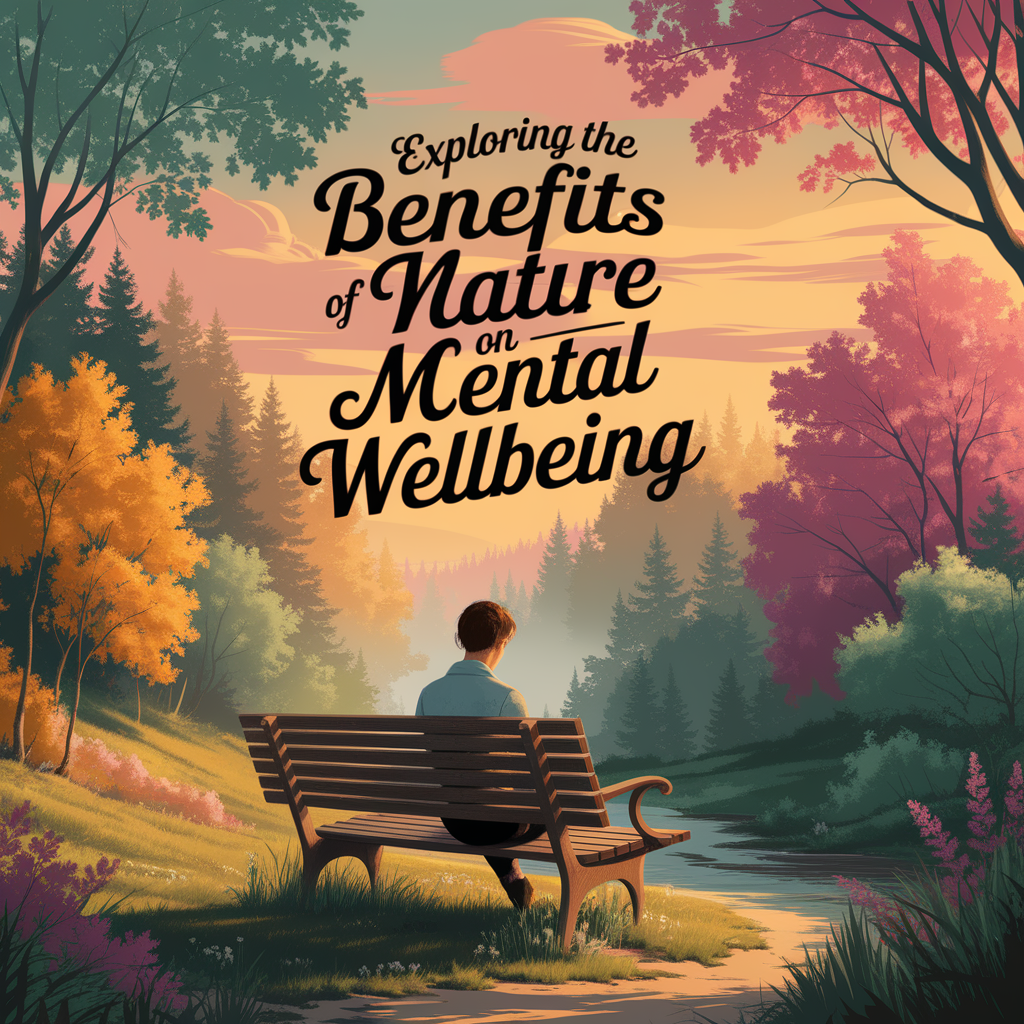Exploring the Benefits of Nature on Mental Wellbeing
Have you ever stood outside, taking a deep breath, and felt the weight of the world lift just a little? Nature has a way of grounding us, doesn’t it? In a world that seems to move at a million miles per hour, the serenity of a leafy park or a sun-drenched meadow can feel like a much-needed breath of fresh air. But what is it about nature that nurtures our mental wellbeing? This article dives deep into the science and personal reflections surrounding our connection to the natural world.
The Scientific Backdrop
Research dating back to the 1980s has increasingly shown that spending time in nature can significantly benefit our mental health. A landmark study by Kaplan and Kaplan proposed the Attention Restoration Theory (ART), which suggests that natural environments help restore depleted cognitive resources. Essentially, our brains are wired to find solace in nature, providing a form of mental reset.
More recent studies have backed this notion, revealing a surprising array of benefits. For instance, a meta-analysis published in Environmental Research indicated that exposure to green spaces can lower levels of stress, anxiety, and depression. Some studies suggest that just 20 minutes in nature can lead to a noticeable decrease in stress hormones like cortisol. I mean, why can’t the office have a view of a mountain instead of a brick wall, right?
Nature and Stress Reduction
Stress management is a big part of mental wellbeing, and nature plays a crucial role. When we step outside, our senses are invigorated by the sights, sounds, and smells of the natural world. The rustle of leaves, the song of birds, and even the scent of fresh grass can have calming effects. A study conducted in Japan even highlighted the benefits of “forest bathing” (or Shinrin-yoku), which emphasizes immersing oneself in a forest environment. Participants reported lower stress levels and improved mood, and let’s be honest—who doesn’t feel a bit happier surrounded by towering trees and chirping birds?
Connection to Nature: A Personal Reflection
I’ll never forget a hike I took last summer. It was a spontaneous decision that turned out to be one of the best choices I made that year. The sun was shining, birds were chirping, and as I navigated through the winding trails, I felt the chaos of daily life fade away. It struck me that I was not just walking; I was recharging my mental batteries. This experience—though anecdotal—mirrors findings from numerous studies that show how nature can indeed be a balm for our frayed nerves.
Enhanced Creativity and Problem Solving
Believe it or not, nature doesn’t just help us unwind; it can also turbocharge our creativity. A 2012 study published in the journal PLoS ONE found that participants who spent four days hiking in the wilderness showed a 50% increase in creative problem-solving abilities. Why? It seems that disconnecting from technology and immersing ourselves in nature allows our brains to think more freely.
This is a golden nugget for anyone struggling with writer’s block or the dreaded creative slump. Next time you find yourself staring blankly at a screen, consider stepping outside. You might just find the inspiration you’ve been searching for among the bushes and birds.
Nature as a Social Connector
We often think of nature as a solitary retreat, but it can also foster social connections. Parks and natural spaces serve as communal hubs where interactions blossom. Whether it’s a picnic with friends, a community garden, or just bumping into a neighbor while walking your dog, these interactions can enhance our sense of belonging and improve overall mental health.
In fact, a study from the University of Queensland found that people who spend time with others in natural settings report higher levels of happiness. It’s a reminder that we are social creatures; our mental wellbeing is often tied to our social networks. So, grab a friend, head to the nearest park, and enjoy some quality time surrounded by nature. (And maybe bring some snacks—who doesn’t love a good picnic?)
The Therapeutic Effects of Nature
Nature therapy, or ecotherapy, is gaining traction as a legitimate form of mental health treatment. Therapists are increasingly incorporating natural settings into their practices, proposing that time spent outdoors can help clients feel more relaxed and open. Some psychotherapists even organize outdoor sessions, where clients can discuss their feelings while walking through a forest or sitting by a lake. It’s a refreshing twist on traditional therapy that can make the process feel less intimidating.
For instance, a therapist in my area has a “walking therapy” program where clients stroll through a local arboretum. Feedback has been overwhelmingly positive—participants report feeling more at ease discussing their emotions while surrounded by beauty. It’s like bringing the couch to the great outdoors, and, honestly, who wouldn’t prefer the sounds of nature over the hum of an air conditioner?
The Role of Green Spaces in Urban Areas
As cities grow, the importance of maintaining green spaces becomes even more critical. Urban areas, often dubbed “concrete jungles,” can pose numerous challenges for mental wellbeing. Without easy access to parks or nature, residents may feel disconnected, leading to increased anxiety and stress levels. This is where urban planners and city officials come into play. Some studies suggest that cities with abundant green spaces report lower levels of mental illness among their inhabitants.
For example, parks in cities like New York and London have been shown to be vital for public health. The presence of trees and flowers not only beautifies the area but also provides residents with essential respite from the hustle and bustle. One might think, “It’s just a park,” but these spaces serve as lifelines for many, offering a necessary escape from the pressures of city life.
Practical Ways to Incorporate Nature into Daily Life
Alright, so you’re sold on the benefits of nature—great! But how do you incorporate it into your busy life? Here are a few practical tips:
- Take a Nature Walk: Even a short stroll in a local park can do wonders. Try to visit during lunch breaks or after work.
- Bring Nature Indoors: Houseplants are not just decorative; they can improve indoor air quality and enhance mood. Plus, they’re hard to ignore when they’re right in front of you!
- Plan Outdoor Activities: Whether it’s a weekend hike, a beach day, or simply a picnic in the park, make it a point to spend time outside.
- Practice Mindfulness: While outdoors, take a few moments to engage your senses. Notice the colors, sounds, and smells around you. This can enhance the restorative effects of nature.
- Volunteer for Conservation: Join community efforts to preserve local parks and natural spaces. Not only do you contribute to the environment, but you also connect with others who share your passion.
Nature in Different Cultures
It’s interesting to note how different cultures view and interact with nature. Many indigenous cultures have long recognized the healing properties of the natural world. For instance, in Native American traditions, the connection to nature is spiritual and deeply ingrained. Rituals often involve elements of nature, emphasizing respect and harmony with the Earth.
In Japan, the practice of Shinrin-yoku (forest bathing) is a cultural staple. It encourages individuals to unplug and immerse themselves in the sights and sounds of the forest, promoting relaxation and healing. This approach to nature isn’t just a trend; it’s a way of life that many swear by for its mental health benefits. Perhaps we could all use a little more of that philosophy in our hectic lives.
Barriers to Accessing Nature
Despite the clear benefits, not everyone has equal access to nature. In urban settings, low-income neighborhoods often lack nearby parks and green spaces, contributing to disparities in mental health. Additionally, physical barriers—such as disabilities—can prevent individuals from enjoying the outdoors. It’s a sobering reality that many face, and something that needs more attention in public policy discussions.
Efforts are being made to address these issues, with community activists advocating for more inclusive and accessible parks. It’s essential that we ensure everyone has the opportunity to experience the healing properties of nature. After all, mental wellbeing shouldn’t be a privilege; it should be a right.
Conclusion: Embracing the Great Outdoors
As we navigate the complexities of modern life, the benefits of nature on mental wellbeing remain undeniable. From stress reduction and enhanced creativity to fostering social connections, nature is a powerful ally in our quest for mental health. So, whether you’re sipping coffee on your balcony surrounded by potted plants or hiking up a mountain trail, remember that every moment spent in the great outdoors can nourish your soul.
In a way, it’s like a reminder from Mother Nature herself: take a moment to breathe, to appreciate, and to connect. And if you find yourself standing under an ancient oak tree, taking in the beauty around you, know that you’re not just enjoying a lovely day; you’re also doing wonders for your mental health. So, let’s lace up those hiking boots and embrace the healing power of nature—after all, it’s just waiting for us to step outside and enjoy.






